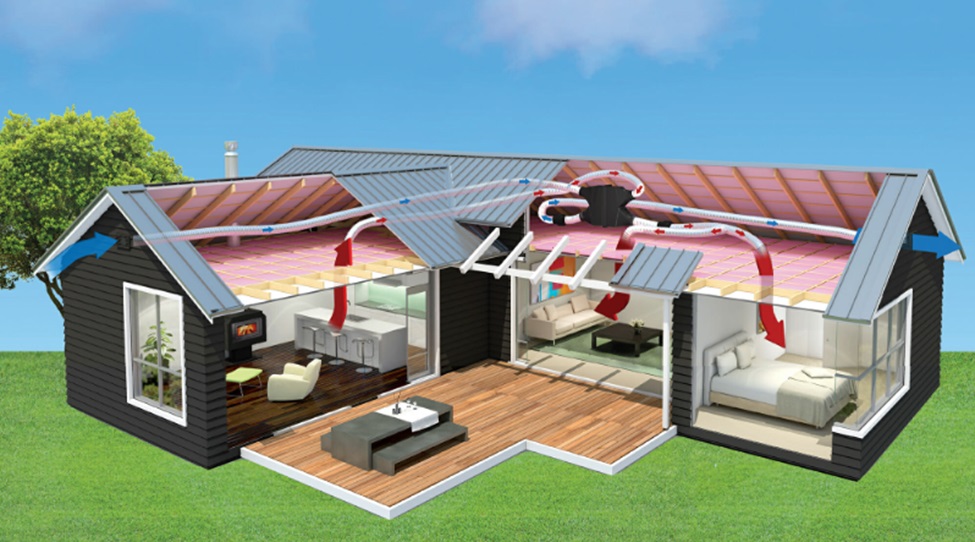Introduction
In the quest for a healthy and comfortable home, the importance of proper home ventilation cannot be overstated. Beyond simply letting in the breeze, effective ventilation is the key to creating a fresh air haven that elevates your lifestyle. Join us on a journey as we explore the art and science of ventilation, discovering how it goes beyond mere functionality to transform the way we live.
The Significance of Home Ventilation
The Air We Breathe
Our homes are our sanctuaries, and the air within them plays a crucial role in our well-being. Ventilation is the process of exchanging indoor air with fresh outdoor air, ensuring a continuous flow that dissipates pollutants, odours, and excess moisture. It goes beyond temperature control, contributing to a healthier living environment.
Health and Comfort
Proper ventilation directly impacts our health and comfort. Stale indoor air can lead to a buildup of pollutants, allergens, and even mould, creating an environment that is not conducive to well-being. A well-ventilated home, on the other hand, reduces the risk of respiratory issues, and allergies, and provides a general sense of freshness that enhances our overall comfort.
Understanding Home Ventilation Systems
Natural Ventilation
Natural ventilation relies on the physical properties of air to move through the home. This can be achieved through well-placed windows, doors, and vents that harness the power of wind and temperature differences. While effective, natural ventilation is subject to external factors and may not provide consistent airflow.
Mechanical Ventilation
Mechanical ventilation involves the use of fans, vents, and air circulation systems to actively move and exchange air. This type of system allows for more control over the ventilation process, ensuring a steady supply of fresh air and the removal of indoor pollutants. Mechanical ventilation is especially beneficial in tightly sealed homes where natural airflow may be limited.
Creating Your Fresh Air Haven
Strategic Placement of Windows
Windows are the gateway to fresh air. Strategic placement of windows allows for cross-ventilation, where cool outdoor air enters one side of the house, while warm indoor air is expelled from the other. This natural process ensures a continuous flow of fresh air throughout the living spaces.
Utilizing Exhaust Fans
Exhaust fans, strategically placed in kitchens, bathrooms, and other enclosed spaces, play a crucial role in removing excess moisture, pollutants, and odors. These fans enhance indoor air quality by expelling stale air to the outside and creating a vacuum effect that draws in fresh air from open windows or vents.
Embracing Mechanical Ventilation Systems
Whole-House Ventilation
For homes with limited natural ventilation, whole-house mechanical ventilation systems offer a comprehensive solution. These systems use fans and ductwork to ensure a continuous flow of fresh air throughout the entire home. They can be customized to address specific ventilation needs, making them versatile and effective.
Heat Recovery Ventilators (HRVs) and Energy Recovery Ventilators (ERVs)
HRVs and ERVs are advanced ventilation systems that not only exchange indoor and outdoor air but also recover energy in the process. In cold climates, HRVs transfer heat from outgoing air to incoming air, helping maintain a comfortable indoor temperature. ERVs, on the other hand, also transfer moisture, making them ideal for humid climates.
Maintaining a Healthy Indoor Environment
Regular Air Quality Assessments
Regular assessments of indoor air quality help identify potential issues and ensure that ventilation systems are operating optimally. Indoor air quality testing can detect pollutants such as mould, radon, or volatile organic compounds (VOCs), allowing for targeted interventions to maintain a healthy indoor environment.
Cleaning and Maintaining Ventilation Systems
Proper maintenance of ventilation systems is essential for their efficiency. Regular cleaning of filters, ducts, and vents prevents the buildup of dust and debris, ensuring that the airflow remains unobstructed. Routine checks and professional servicing contribute to the longevity and effectiveness of the entire ventilation system.
The Future of Home Ventilation
Smart Ventilation Solutions
As technology advances, smart ventilation solutions are becoming increasingly popular. These systems can be programmed and controlled remotely, allowing homeowners to adjust ventilation settings based on occupancy, outdoor air quality, and specific preferences. Smart ventilation provides a tailored and energy-efficient approach to maintaining a fresh indoor environment.
Sustainable Ventilation Practices
In the pursuit of eco-friendly living, sustainable ventilation practices are gaining prominence. This includes the integration of passive design principles in home construction, such as utilizing natural shading, thermal mass, and optimized building orientation to enhance natural ventilation. Additionally, energy-efficient mechanical ventilation systems contribute to a reduced environmental impact.
Conclusion
Elevating your lifestyle with proper home ventilation is not just about the physical act of letting air in; it’s about creating a fresh air haven that positively impacts your health, comfort, and overall well-being. Whether through natural means, mechanical systems, or a combination of both, the art and science of ventilation ensure that your living spaces are filled with the invigorating essence of the outdoors. As we embrace the importance of breathing easily within our homes, the transformative power of proper ventilation becomes a cornerstone of a healthier and more enjoyable lifestyle.


